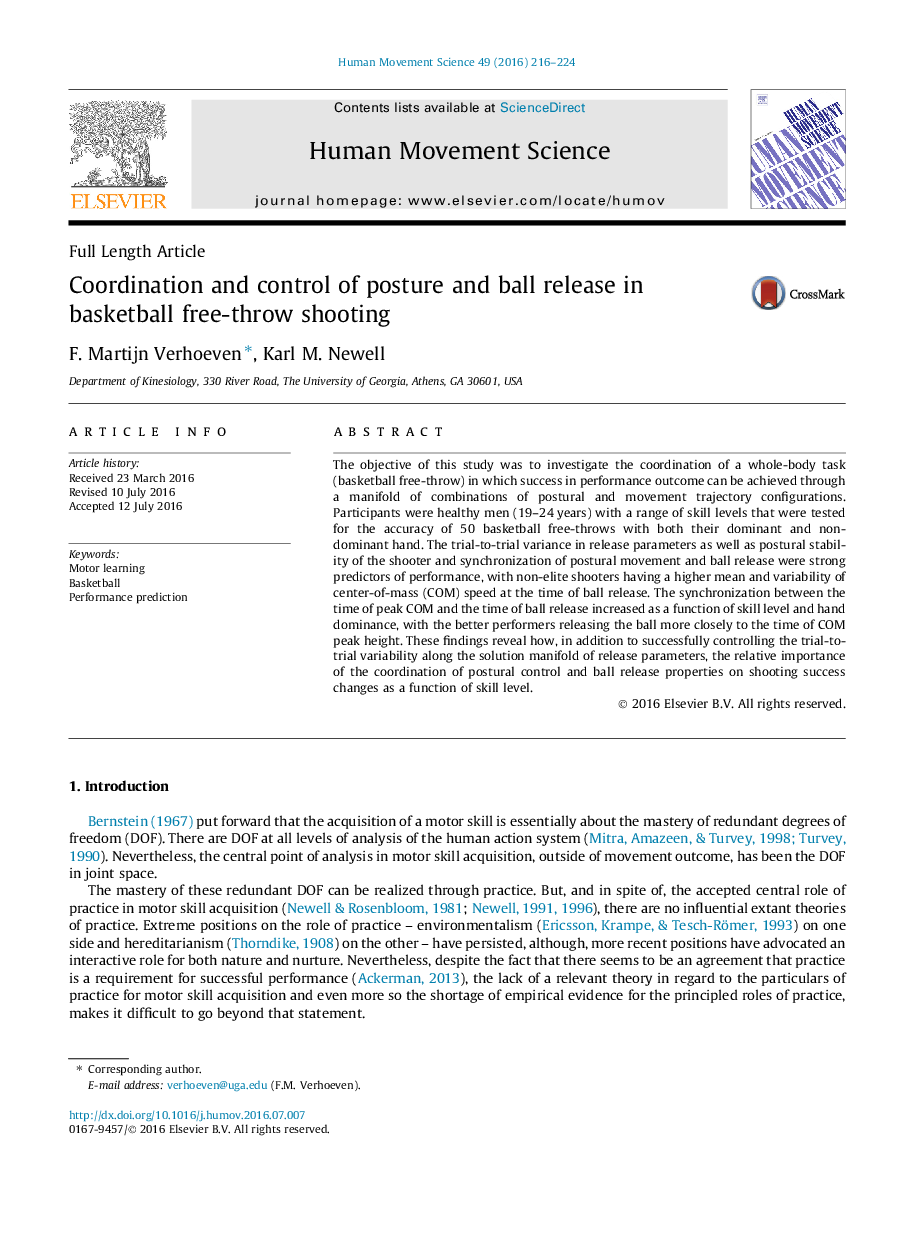| Article ID | Journal | Published Year | Pages | File Type |
|---|---|---|---|---|
| 7291289 | Human Movement Science | 2016 | 9 Pages |
Abstract
The objective of this study was to investigate the coordination of a whole-body task (basketball free-throw) in which success in performance outcome can be achieved through a manifold of combinations of postural and movement trajectory configurations. Participants were healthy men (19-24Â years) with a range of skill levels that were tested for the accuracy of 50 basketball free-throws with both their dominant and non-dominant hand. The trial-to-trial variance in release parameters as well as postural stability of the shooter and synchronization of postural movement and ball release were strong predictors of performance, with non-elite shooters having a higher mean and variability of center-of-mass (COM) speed at the time of ball release. The synchronization between the time of peak COM and the time of ball release increased as a function of skill level and hand dominance, with the better performers releasing the ball more closely to the time of COM peak height. These findings reveal how, in addition to successfully controlling the trial-to-trial variability along the solution manifold of release parameters, the relative importance of the coordination of postural control and ball release properties on shooting success changes as a function of skill level.
Related Topics
Life Sciences
Neuroscience
Cognitive Neuroscience
Authors
F. Martijn Verhoeven, Karl M. Newell,
